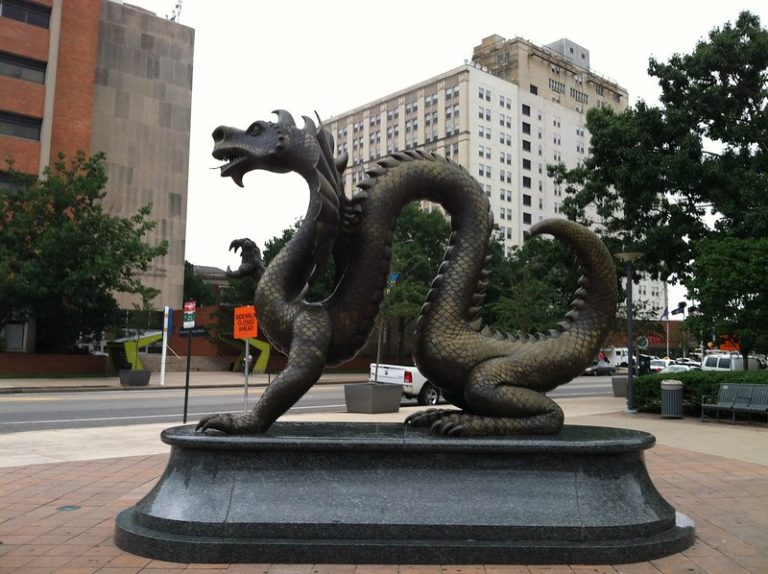
Imagine having your college commencement ceremony with students from all over the US and 130 other countries around the world on the National Mall. This is an honor experienced only by graduates of The George Washington University in Washington, D.C. During your time as an undergraduate, you would have had behind the scenes access to the Smithsonian, museums, the Library of Congress, US Capitol and other national treasures. You probably also had top political officials and other influential leaders serve as a guest speaker or visiting professor in at least one of your courses.
Established in 1821 by an act of Congress to fulfill George Washington’s dream of having a national university in D.C, GW has two campuses – one in Foggy Bottom on Pennsylvania Avenue and the Mount Vernon campus near Georgetown. Students live and take classes on both campuses and travel between on the “Vern Express” shuttle which runs 24/7 during the academic year.
Here are a few quick facts about GW:
Acceptance: 43%
Freshman retention: 88%
Freshmen out of state: 99%
Most popular majors: international affairs, political science, finanace
4-year Graduation rate: 79%; 6-year: 85%
Student Community Diversity: 7.6% Black, 11% Latino, 11% International
Housing: 61% of students live in campus housing, which is required for the first 3 years. Rising juniors, however, can enter a lottery that grants a limited number of exemptions. Some of the most popular places to live off campus are in Foggy Bottom, Dupont Circle and Georgetown.
The university meal plan allows students to dine at both on-campus cafes and more than 100 off-campus vendors with a great variety of options including food trucks and nicer, sit down restaurants. Being in the middle of an urban campus can raise concern; the campus offers many services to ensure security on campus.
Academics: All GW undergrads are required to complete a 19-credit core curriculum with courses in writing, natural or physical sciences, math or statistics, social science, and the humanities, as well as 2 writing-in-the-disciplines courses. During the first year, all students take a University Writing course.
GW offers an honors program and a number of accelerated undergraduate/graduate degree options. The workload is described as heavy but also not as competitive as one might expect. 52% of classes have fewer than 20 students. Professors teach lectures and seminars while TAs lead discussions or labs. Students who wish to study abroad will find more than 300 programs available in more than 60 countries; 31% of GW students take advantage of this opportunity.
The Center of Career Services connects students with more than 12,000 internships, which includes opportunities on Capitol Hill, the Kennedy Center, the Smithsonian and many other local organizations. Volunteering is also a big thing at GW. More than 70 courses combine academics and service work in the D.C. community.
Similar colleges to consider: Boston University, NYU, Northeastern, UMiami (FL)
Social: With everything to do in D.C., no student should ever be bored. 15% and 19% of women, respectively “go Greek” and there are 475 on-campus student organizations students can join. The most popular annual events are the Fall Fest and Spring Fling carnivals, which feature free food and well-known musical performers. Every 4 years, GW has its own Inaugural Ball to celebrate the swearing in of the new President.
For students who want to venture further off campus, popular road trips include Ocean City, Maryland and Virginia Beach. Philadelphia and New York City are accessible by bus or train, which is a plus because most GW students don’t have cars.
While GW doesn’t have a football team, their 27 varsity teams play in the Division I Atlantic 10 Conference. Men’s and women’s basketball teams regularly make NCAA appearances, and women’s basketball and gymnastics, and men’s swimming and diving teams and water polo have been recent conference champions. 20% of students play sports recreationally in 25 intramural and 34 club sports. The mascot for the Colonials resembles a certain Founding Father, however there is also an unofficial mascot – the hippopotamus.
Financial: GWU has a fixed rate-plan that guarantees that tuition will not increase for up to 5 years of full-time undergraduate study. GWU offers need-based aid, as well as non-need based merit scholarships and 175 athletic scholarships. The average percent of need met is 93%, with 81% being fully met. Although the tuition and fees are $83,000, the average financial aid package is $42,000. 66% of students receive some type of financial aid.













